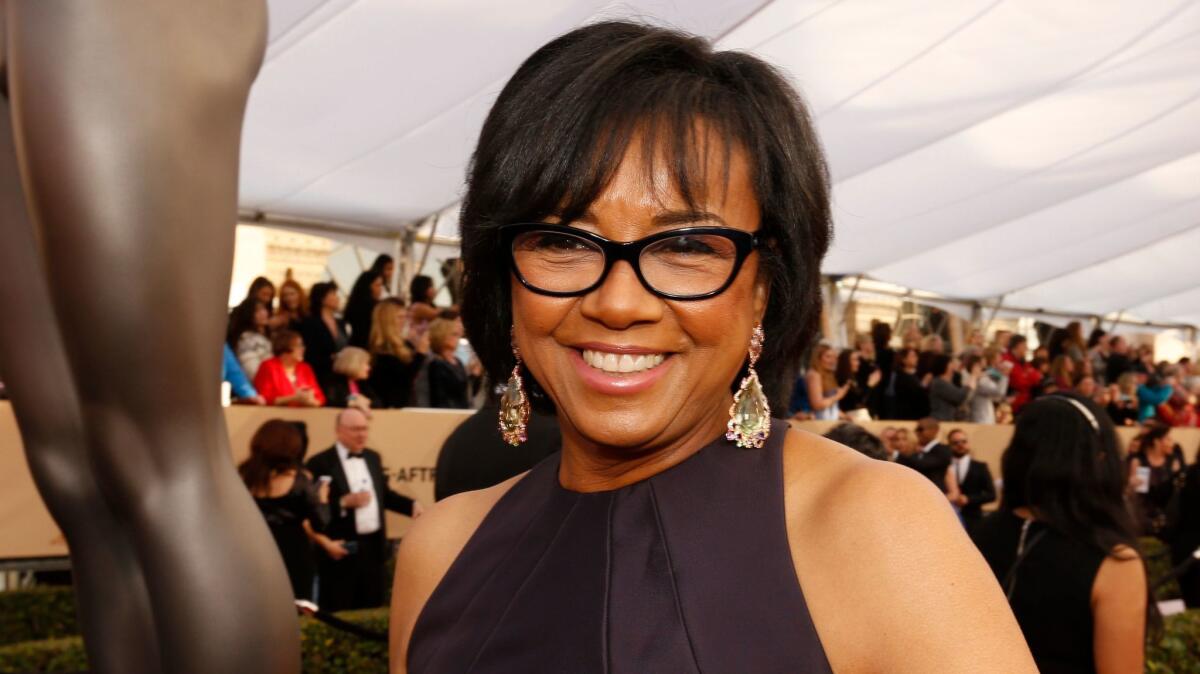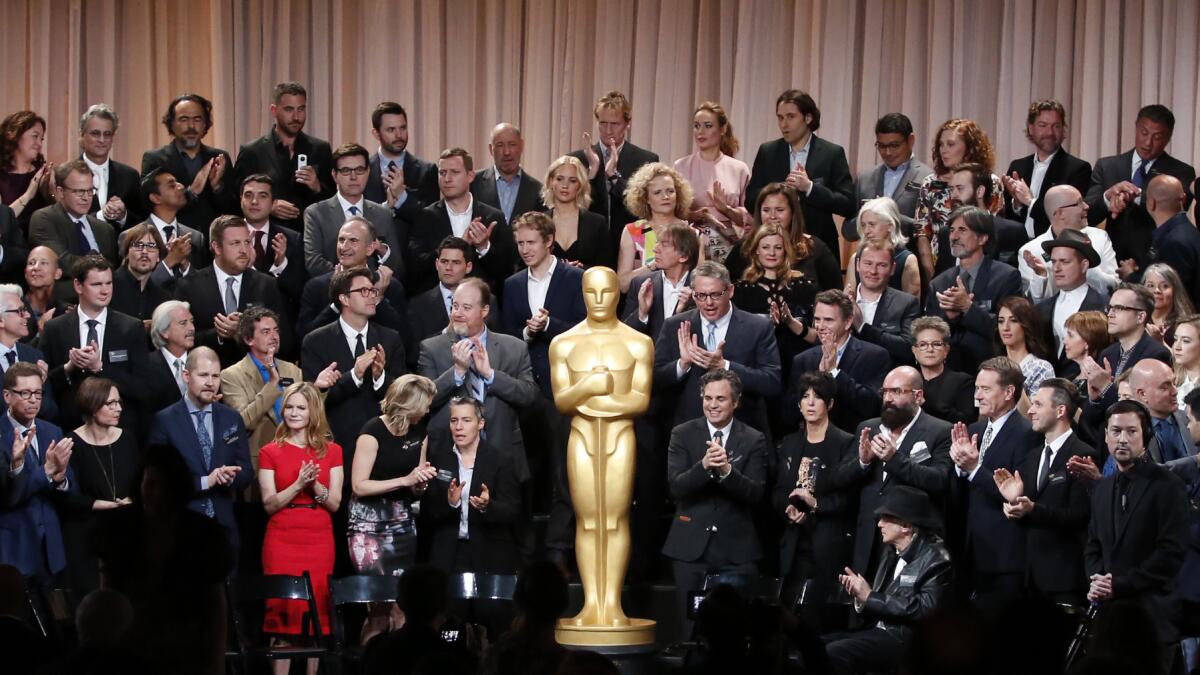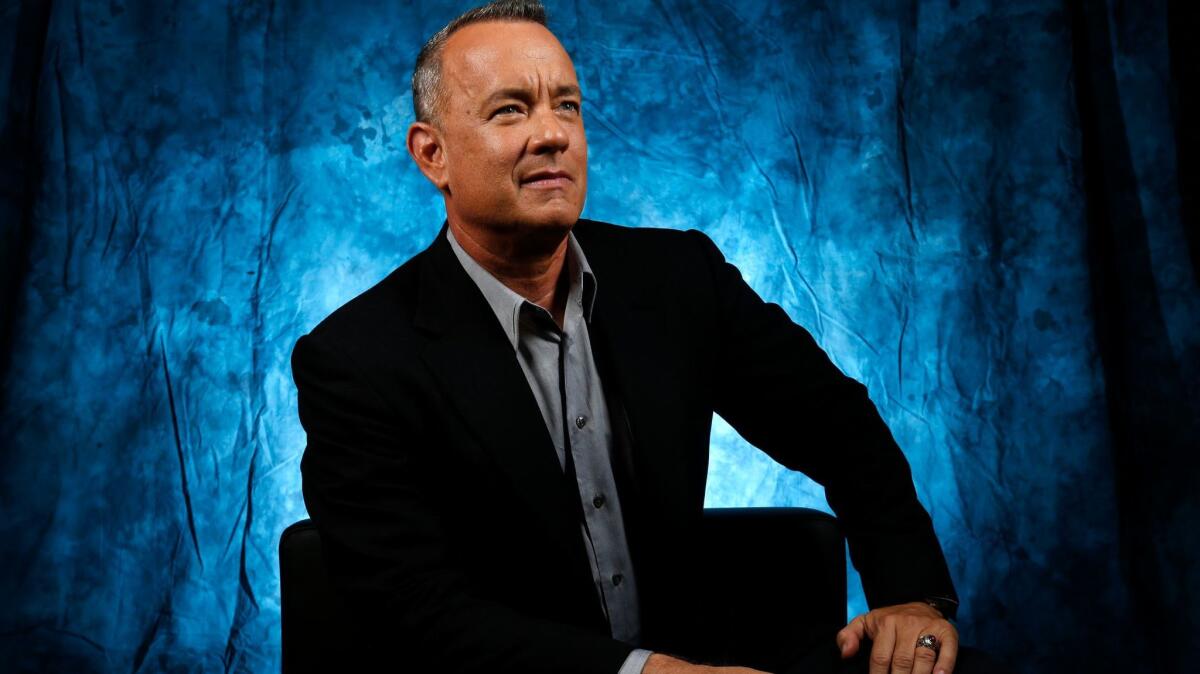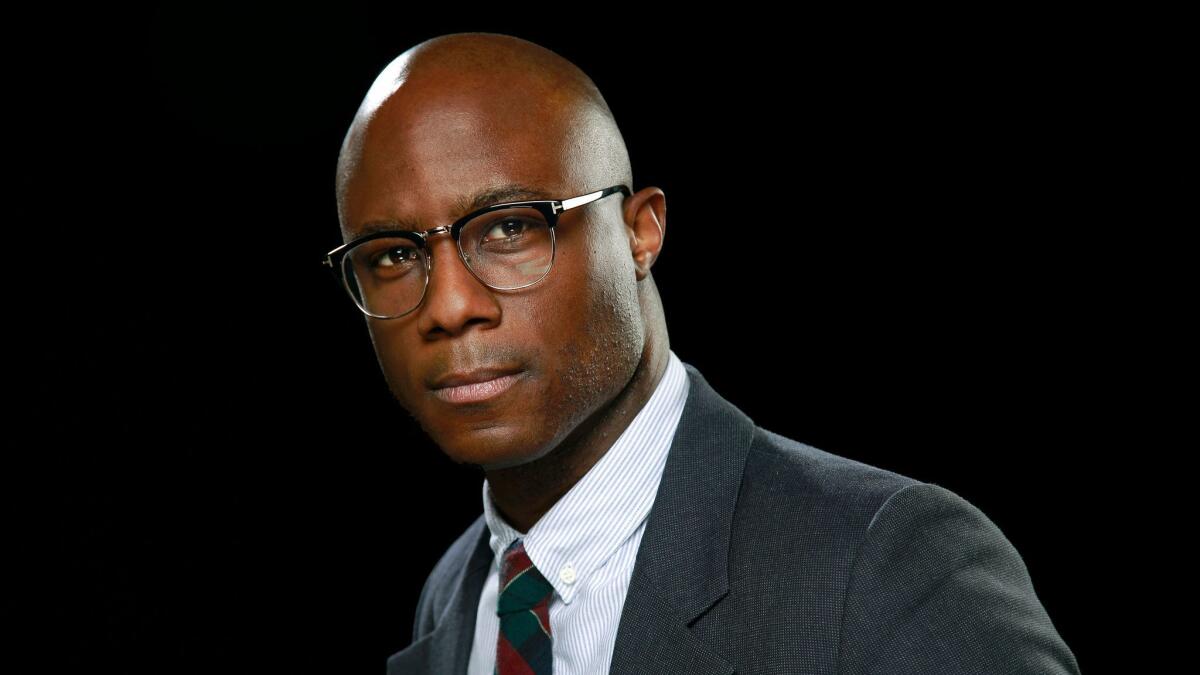The movies story of 2016: The film academy and diversity

In the pre-dawn hours of Jan. 14, as she prepared to step in front of the cameras at the Samuel Goldwyn Theater in Beverly Hills to announce the 2016 Oscar nominations to the world, Cheryl Boone Isaacs braced herself for what was to come.
Scanning the list of nominations while most of Los Angeles slept, the president of the Motion Picture Academy of Arts and Sciences quickly realized that, for the second year in a row, all 20 of the acting nominees were white. She knew there would be controversy. The only question was how bad it would get.
“As I looked through the list, I thought, ‘Oh, my goodness. Oh, my goodness,’ ” Boone Isaacs said this month, recalling the moment. “I had certainly felt that we were going to have more inclusion than we did. It was frustrating to me. I thought, ‘This is going to be a tough time.’ ” She paused. “And it was.”
The days and weeks that followed would prove to be some of the most tumultuous — and pivotal — in the academy’s history, as the #OscarsSoWhite tempest buffeted the nearly 90-year-old institution, dividing its membership and threatening to do lasting damage to its image as the public face of Hollywood.
91% white. 76% male. Changing who votes on the Oscars won’t be easy. »
Even as the academy’s leadership moved swiftly to address the growing furor, thorny questions of race and discrimination would dominate the awards season, climaxing in an unusually charged Oscar telecast that host Chris Rock, in a blistering opening monologue, would term “The White People’s Choice Awards.”
For the academy, the diversity issue had been something of a ticking public-relations time bomb since a landmark 2012 Times study revealed the ranks of its membership — which had always been kept under wraps — to be, at that time, nearly 94% white and 77% male. “Thanks to the L.A. Times, and with the landscape of filmmaking changing so much around the country and around the world, we were very much aware that we need to step up our game with regard to inclusion,” Boone Isaacs said.
Historically, the academy had been more about honoring traditions than changing with the times, proud of its vaunted exclusivity and bound for years by quota systems that kept its membership fairly stable. But at the November 2015 Governors Awards, in wake of the first flare-up of the #OscarsSoWhite controversy, Boone Isaacs announced a five-year initiative to boost diversity among the group’s members, staff and governing board.
When the #OscarsSoWhite firestorm rose again in January with increased ferocity, however, the academy’s leadership finally decided that incremental change and talk of working on the issue were no longer sufficient. What was needed was immediate and visible action. “Possibly as a minority female, talk is talk,” Boone Isaacs said. “People were already mentally there. It was just, ‘OK, let’s go. Let’s make this work right now.’ ”

Nearly a year later, the academy that has emerged on the other side of the controversy — while still disproportionately white and male (89% and 73%, respectively) — has made significant strides toward becoming both more transparent and more reflective of the diversity of the wider world. Just eight days after the Oscar nominations were announced, seeking to stem the crisis amid calls for a boycott of the telecast, the academy’s 51-member board of governors announced sweeping new measures aimed at doubling the number of women and minorities in its ranks by 2020.
In wake of a bitterly divisive presidential election in which questions of race and identity came to the fore, the #OscarsSoWhite controversy and the academy’s reaction to it have taken on an added resonance. Many in Hollywood believe strongly that the conversations around — and concrete steps toward — diversity are more important than ever.
For the most part, the academy’s strides have been celebrated, even as many see them as essentially baby steps — and overdue ones at that. If anything, the academy’s efforts have starkly highlighted deeper inequities in the entertainment industry that have persisted throughout Hollywood’s history and that will not be easily wiped away — inequities that many believe need to be addressed throughout the system, from the various guilds to the executive suites where films are greenlighted.
“It’s important to point out that when you start at zero, if you go from zero to one, that’s progress,” said Todd Boyd, professor of cinema and media studies at the USC School of Cinematic Arts. “So progress is relative.”
What progress has been made hasn’t come easily.
The academy’s diversity push itself sparked controversy among some older members, who were angered by suggestions that they were racist and out of touch, with many fearing they’d be unfairly purged from the organization’s voting rolls under the new rules.
“I’m very proud of the accomplishments the academy has made,” Boone Isaacs said, reflecting on the last 11 months. “I would say 95% of the time it was all good. There were some days that maybe I’d read something and you just go, ‘Oh, man, why this negativity?’ But change is not the easiest thing for many people, and it takes a little bit of time. We knew that what we were doing was right. So you just need to stay on your path.”
The first major step on that path came in late June, when after months of aggressive outreach by members of its various branches, the academy invited 683 industry professionals to join its ranks, 46% of them female and 41% people of color — by far the largest and most diverse class ever.

Tom Hanks, a member of the academy’s board of governors for the last several years, said the institution needed to make such changes to keep pace with societal shifts.
“You look back and I think the academy might have been slow to cast the net wide in the past — probably too slow,” Hanks acknowledged. “But the nature of the business is constantly in flux. So I’m proud of what the academy has been doing. The more diverse the Motion Picture Academy of Arts and Sciences is, the more it can represent the arts and sciences of motion pictures.”
Actor Aaron Eckhart, who joined the academy in 2007, echoes that sentiment. “The one thing that’s sure in life is change, so let’s have some of that and see how it works out,” he said. “We’re all evolving, and the academy should be evolving as well.”
Many older academy members, however, worried this evolution could come at their expense, as the organization announced in January that it would shift some who were no longer active in the business to nonvoting emeritus status.
“Have you all forgotten that those of us in our 70s, 80s, and some in their 90s were more often than not active participants in the civil rights movement of the 1960s, some registering voters in the South when one’s life was on the line?” actress Carol Eve Rossen wrote in an impassioned letter to the academy, which she shared with The Times in January. “How is it that you might consider ‘dumping’ those of us who worked so hard and studied so well and care so much about our craft?”
But Boone Isaacs insisted there was never any intention to sweep out large numbers of older members. (In recent months, some 60 to 70 members have been shifted to nonvoting status, less than 1% of the total academy membership.)
“There was nothing that we ever did or said that ever gave that impression,” Boone Isaacs said. “That was more about interpretation from the press, to be honest with you, and a sort of jump to conclusions. That was a dust-up based off an assumption and not a reality.”
Still, this year’s changes portend an academy that over time will look quite different than the academy of yesteryear. Long the embodiment of the American film industry, the academy has moved to become not only diverse in terms of race and gender but also more global. More than 40% of this year’s invitees were from outside the United States.
While the academy’s leadership says this influx of foreign members simply reflects the broader globalization of the film industry as a whole, it will also no doubt make it easier to hit diversity targets that may have been difficult, if not impossible, to reach simply by adding members from the States.
That shift toward a more globalized academy, however, has raised eyebrows among some longtime members.
“I wonder about the choice to make this international academy,” said acting branch member Jennifer Warren, who is chair of the Alliance of Women Directors. “I think we should still have our own identity here. The academy should be a visible reflection of the American film industry so it’s not giving a wrong impression to the world that we’re more diverse than we are. Are we trying to cover up our lacks and our problems by doing this? I don’t know.”
As it happens, after two consecutive years of #OscarsSoWhite controversy, this awards season includes an unusually strong crop of films dealing head-on with issues of race including “Moonlight,” “Fences,” “Loving” and “Hidden Figures.” Many black filmmakers, including “Moonlight” director Barry Jenkins, see this wave of movies as the response to an artistic impulse and need rather than a social media hashtag.

“There are a lot of films being framed as addressing #OscarsSoWhite and diversity, but all these movies originated years and years ago,” Jenkins said. “I think storytellers felt, ‘Why am I not seeing this thing that I want to see? Why am I not feeling the things in cinema that I need to feel?’ And they took it upon themselves to create that feeling. And I think that is a lovely thing, one that needs to be talked about more and needs to continue.”
Given today’s fractious political climate, the conversation around issues of diversity in Hollywood may take on a different tenor going forward.
“If you look at #OscarsSoWhite in light of Trump, I think there would probably be some pushback saying this is political correctness and people shouldn’t have to be concerned about issues of inclusion and representation,” said Boyd. “Hollywood may double down and embrace the opportunity to use whatever power they have to dissent. Or maybe they’ll fold. We don’t know how this is going to play out.”
For her part, Boone Isaacs says the academy has no intention of losing momentum in its drive toward diversity.
“That question — what kind of country are we? — that’s what we’re really wrestling with here, with a couple of very different views of what it is,” she said. “For the academy, I would say that we know who we are… I’ve been in this business a long time and I’ve seen the door open and close many times. But this conversation of inclusion is really bubbling up, so I don’t think it will slow down.”
On Jan. 24, Boone Isaacs, who is serving her last term as academy president, will step before the cameras one last time to announce the Oscar nominations.
This time, she is feeling hopeful that those nominations will reflect the kind of inclusion that she has been working to foster within the academy and across the film industry. That said, she felt hopeful last time as well.
“We had two years where, certainly in the acting category, it was a bit … different,” she said, choosing her words diplomatically. “I don’t think it’ll be that this year. But, of course, I don’t know.”
More to Read
Only good movies
Get the Indie Focus newsletter, Mark Olsen's weekly guide to the world of cinema.
You may occasionally receive promotional content from the Los Angeles Times.












